I am working in MATLAB
PLots
NOTE : Here, the data plotted is the track of x - position of the pixel at position (i,j) of the FIRST frame throughout all the frames. It means that the pixel at (23,87) in the first frame has, at the end of the sequence, x-position as 35 (as visible in the plot).
Here is some typical plots of x_pos for some different values of (i,j) . (i,j) refers to a pixel at (i,j) in the first frame not throughout all frames
For (i,j) = (23 ,87)
(i,j) = (42 ,56) 
(i,j) = (67 ,19)
